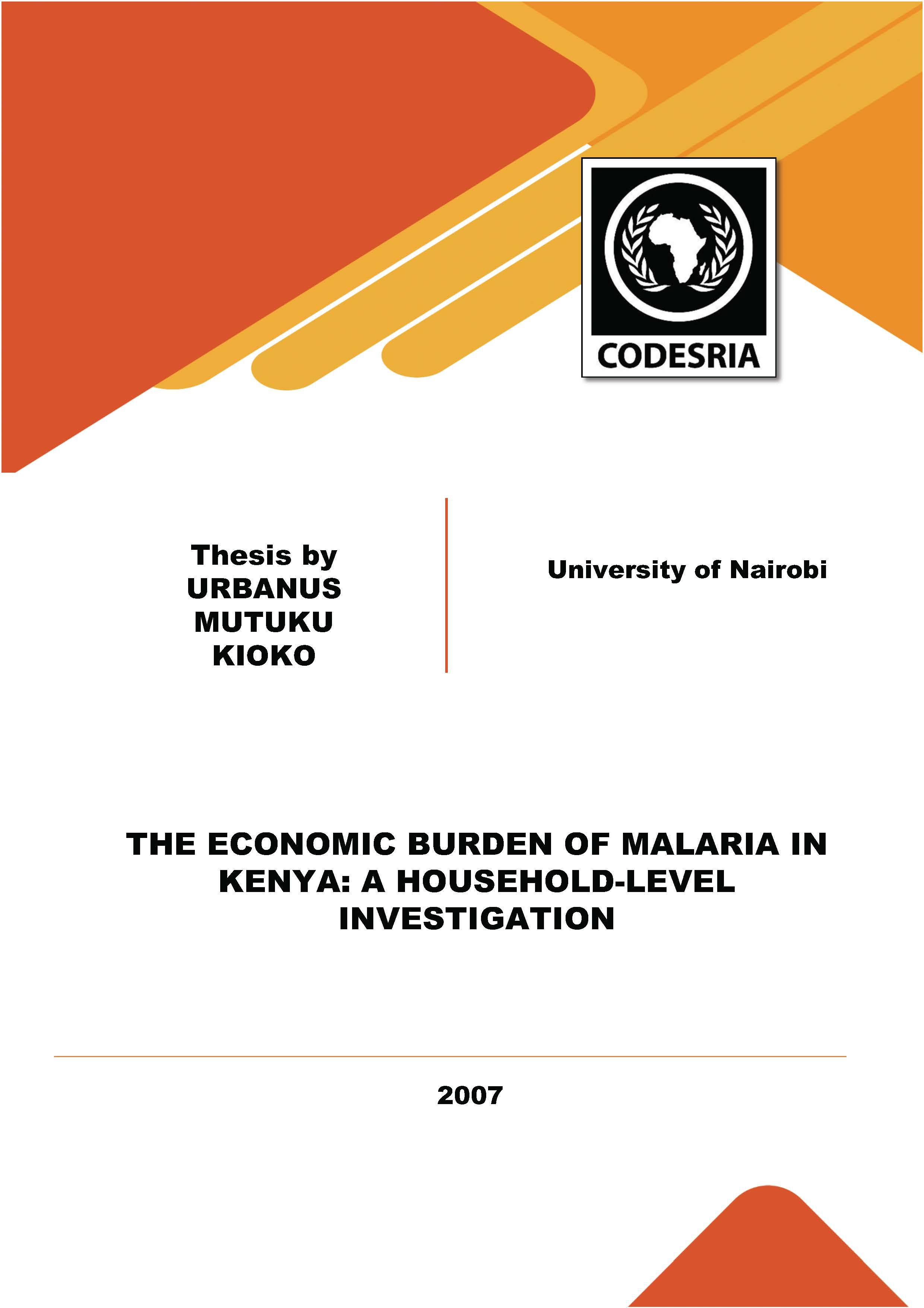The Economic Burden of Malaria in Kenya: a Household-Level Investigation
Keywords:
Malaria, economic recession, household income, wages, KenyaSynopsis
The economic impact of malaria on households and individuals is increasingly becoming a subject of considerable interest to researchers and policy makers. A vailable evidence indicates that malaria endemic countries stand to lose billions of dollars in national income to malaria morbidity and mortality. In Kenya, malaria is the leading cause of morbidity, accounting for 19 percent of hospital admissions and 50% of outpatient cases in public health institutions. Despite the devastating effects of malaria, there exists little empirical evidence on the economic burden of the disease. This thesis sought to estimate the economic burden of malaria at the household level, and simulate economic effects of malaria control investments on farm output and household incomes. The data used for the study was obtained from the welfare monitoring surveys conducted by the Government of Kenya, Ministry of Planning and National Development. Structural models of crop production, household income and wages were estimated to measure the economic burden of malaria, controlling for other covariates in these models. In all the models, malaria is endogenous but valid instruments are used to vary it exogenously. The estimation results show that malaria imposes large economic burdens on households in Kenya. In some seasons households lost up to 70% of their crop output and almost 93 % of their income to malaria in the early 1990s. Moreover, the results show that the economic burden due to malaria is substantially greater than the burden imposed by other diseases. An important finding of this thesis is that government expenditures on malaria control and schooling has a significant mitigating effect on malaria burden. Thus, malaria control activities can significantly contribute to poverty reduction in malarious environments in the country. Indeed, investments in malaria control programmes have large economic returns. The explanation for, these returns is that malaria control makes an immediate contribution to output or income by increasing the quantity and quality of labour, primarily through reductions in morbidity, debility, and absenteeism from work.
Downloads
References
Ackerberg, D.A., and Caves K. (2003). 'Structural Identification of Production Functions: An Application to the Timing of Input Choice'. Department of economics, UCLA, Los Angeles, CA 90095.
Adebayo, B.A. (2004). 'Intra-Household Distribution of Income and Calorie Consumption in South Western Nigeria'. Economic Growth Centre, Centre Discussion Paper No. 890, Yale University.
Arrow, J.K. Panosian, C.B. and Gelband, H. (eds) (2004). 'Saving Lives, Buying Time. Economics of Malaria Drugs in an Age of Resistance '. The National Academies Press Washington, D.C.
Audibert, A. (2003). 'Productive Benefits after Investment in Health in Mali'. Economic Development and Cultural Change, 770-782.
Audibert, A. and Etard J.F. (1998). 'Impact of Schistosomiasis on Rice Output and Farm Inputs in Mali'. Journal of African Economies, 7(2): 185-207
Audibert, M. (1986). 'Agricultural Non-Wage Production and Health-Status - A Case Study in a Tropical Environment'. Journal of Development Economics, 24(2): 275-291.
Attanayake, Julia Fox-Rushby, and Mills A. (2000). 'Household Costs of Malaria Morbidity': A Study in Matale District, Sri Lanka. Tropical Medicine and International Health, 5(9): 595-606.
Asenso-Okyere, W.K., Dzator, J.A. (1997). 'Household Cost of Seeking Malaria Care. A Retrospective Study of Two Districts in Ghana'. Social Science and Medicine, 45 (5): 659-667.
Appleton, S. (2000). 'Education and Health at the Household level in Sub-Saharan Africa'. CID Working Paper No. 33.






